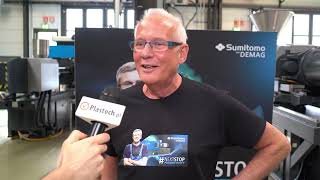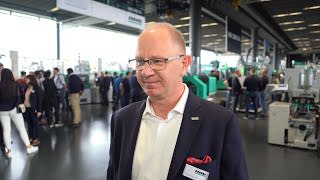 There’s a lot in favour of automated injection moulding: increased performance – greater flexibility – constant process stability – higher output of parts without loss of quality – integration of several functions in one operation. But which type of robot is the better choice – a linear robot or an industrial robot?
There’s a lot in favour of automated injection moulding: increased performance – greater flexibility – constant process stability – higher output of parts without loss of quality – integration of several functions in one operation. But which type of robot is the better choice – a linear robot or an industrial robot?When planning a fully automated injection moulding cell, the choice of robot – linear or industrial – is of prime importance. But which type of robot is more suitable for the application? – The following comparison throws light on their differences and respective advantages and disadvantages.
Linear robots operate in a threedimensional Cartesian space (hence also the term “Cartesian robot”) with defined coordinates. These robots have three independent main linear axes (X,Y, Z), which are in most cases servo-driven, the Y axis being additionally equipped with up to three pneumatically or electrically driven swivelling or rotating axes (A, B, C).
Basically, linear robots are able to carry heavy loads over very long distances within a large working space, perform insert-placing and partsremoval operations quickly and with a high degree of positioning accuracy, permit automation at relatively low cost – three servo axes are generally sufficient for simple pick-and-place applications, can be integrated within the safety housing of the injection moulding machine (e.g. ER-HLi), can be operated (programmed) comparatively easily and, in the case of Engel ERC linear robots, integrated into the machine control system.
Industrial robots, also known as articulated robots, can be equipped with up to six servo-driven axes, all of them rotational, and have a spherically defined working space.
Industrial robots can work in variable directions and are used both for universal and for even the most complicated applications, are capable of transmitting high forces and can even demould undercut parts, can be installed separately in order to reduce the overall height of the machine. This is advantageous, for example, in cases where a laminar flow box is located above the clamping unit (clean room application), are ideal for use with peripheral equipment and permit the integration of highly demanding tasks (e.g. assembling of parts) into the operating cycle of the machine.


